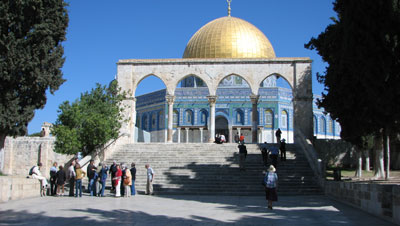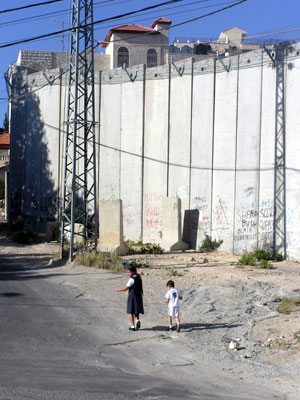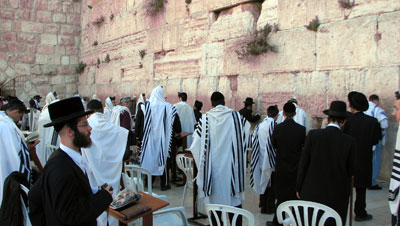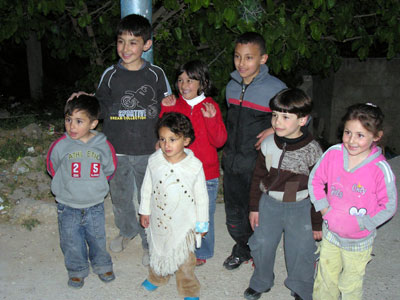Israel & Palestine — Searching for understanding in this region of conflict
Rob Sangster, Memphis, TN
On my first visit to Israel, I was touched by being in the midst of all the names, places and stories that had been part of my upbringing. That was in 2000, after I’d spent a couple of weeks in Jordan. I didn’t realize it at the time but, as a sightseer, I was shielded from all but the shadows of the conflict between Israel and Palestine.
This year I decided to learn more by talking directly with knowledgeable Israelis and Palestinians. I wanted to challenge my preconceptions, to see, listen and question in an attempt to understand what the conflict is really about and to discover what motivates the participants and how the conflict is affecting them.
Travel with a purpose
Travelers to Israel and Palestine have many different objectives and there are tours to suit them all: pilgrimage tours for Christians and Evangelical Zionist Christians; tours (often called “missions”) celebrating the heritage of Jews and Muslims in the region, and garden-variety tours for those who visit out of curiosity about the history of this area. You can even sign up for a tour consisting of counterterrorism briefings!
To meet my objectives, I joined a delegation organized by Interfaith Peace-Builders (IFPB) and the National Peace Foundation, nonprofits whose staff members have lived in the Middle East and established many contacts in both Israel and Palestine.
The 11 delegates who comprised our group, men and women, gentiles and Jews, were not experts on Middle Eastern history or on Judaism or Islam — and definitely not on the details of battles and treaties between Israel and Palestine — but we were committed to being honest reporters of what we saw and heard during our April ’08 visit.
Throughout the course of two weeks we visited a number of the sites seen by many commercial tours, including Jerusalem’s Jewish and Muslim Quarters, the Western Wall, the Via Dolorosa, the Church of the Holy Sepulchre, the Dome of the Rock, the al-Aqsa mosque and the Yad Vashem Holocaust Museum.
We also spent time at the Grotto of the Nativity in Bethlehem, the Basilica of the Annunciation in Nazareth, the Ibrahimi Mosque (Tomb of the Patriarchs) near Hebron and the parliament in Ramallah. We saw refugee camps, checkpoints, demolished homes and the Separation Wall.
Making it personal
In the Middle East there are dozens of sides to every story. To hear them, we talked with 14 Palestinian groups, 14 Israeli groups, two joint Palestinian-Israeli entities and three international groups, including a UN agency. We had up to four meetings a day that focused on the struggle between Palestinians and Israelis plus visited sites that revealed the effect of the occupation on the people of both countries.
We all know that what a traveler remembers most are the people he or she meets along the way. On this trip, that was deeply true for me.
Nomika lives in Sderot, a small Israeli town not far from the barrier that walls off the Gaza Strip. When she hears the piercing wail of the rocket-alert siren, she knows she has only 15 seconds to find shelter.
During our visit, she pointed out her window at a building across the street, and I saw the scorch marks where, a week earlier, it had been hit by one of the small, unguided rockets that are periodically shot from inside the Gaza Strip.
Bassam, a doting father who lives in Bethlehem, in the Palestinian West Bank, received a call telling him that his 10-year-old daughter, Abir, had been walking with other girls near her school when she was shot and killed by an Israeli soldier.
Instead of seeking revenge, Bassam sought to have the soldier brought to trial, but the military closed the file after two weeks. Despite the tragedy and the failure to receive justice, he concentrated on his work with Combatants for Peace, a group consisting of former Israeli and Palestinian fighters who renounce violence and now work tirelessly toward peace.
Daoud, an energetic Palestinian, cultivates grape vines and olive trees on land his family bought in 1915 and for which he has the original deed. Yet the road to his property has been blocked with huge boulders by Israeli settlers to prevent him from getting his grapes and olives to market. Despite that, he posted a sign on his gate reading, “We Will Not Be Enemies.”
Among many other groups, we met with graduate students from Jerusalem’s Hebrew University and went to Birzeit University, near Ramallah, to listen to Palestinian students. We also spent one night in a refugee camp near Bethlehem.
People trying to help
We met with many groups whose members are dedicated to bridging the gap between the opposing sides.
In Nazareth, an organization staffed by Israeli lawyers is fighting for the legal rights of Palestinian citizens of Israel, and a group of progressive Israeli women near Tel Aviv battles for women’s rights. Another group documents human rights violations, in part through its “Shoot Back” program which gives videocameras to Palestinians in high-conflict areas to capture on film violations by the Israeli military.
We also talked with the United Nations Office for Coordination of Humanitarian Affairs, with Combatants for Peace, with Christian Peacemaker Teams and with Physicians for Human Rights (Israeli and Palestinian physicians who provide medical services, especially to asylum seekers). In addition, we met with Palestinian community activists working tirelessly to improve living conditions.
A lasting impression
The more I saw and heard, the more I recognized that I would not understand all the subtleties of this conflict. Nevertheless, I concluded that by far the majority of Israelis and Palestinians yearn for peaceful lives for themselves and their children.
Every day of this trip I felt welcomed, safe, well housed and wonderfully fed. In the view of some, travel anywhere entails more risk than sitting at home on the couch, yet Israel and Palestine are among the many places where media reports written continents away heighten the apprehension that deters travelers.
This trip exceeded my highest expectations. I experienced beauty and history. I met people of great character, people resolutely determined to let neither old wounds nor political posturing continue to ruin their lives. It was a moving experience.
Go. See for yourself.
For information on upcoming delegation visits like this one, contact Interfaith Peace-Builders (Washington, D.C.; 202/244-0821, www.ifpbdel.org). The final trip for 2008 is scheduled for Nov. 8-22, and the next is planned for March 7-20, 2009.
The trip cost, excluding international airfare, is $2,000 per person, which includes accommodations, all breakfasts and dinners, local transportation, guides and basic gratuities.





